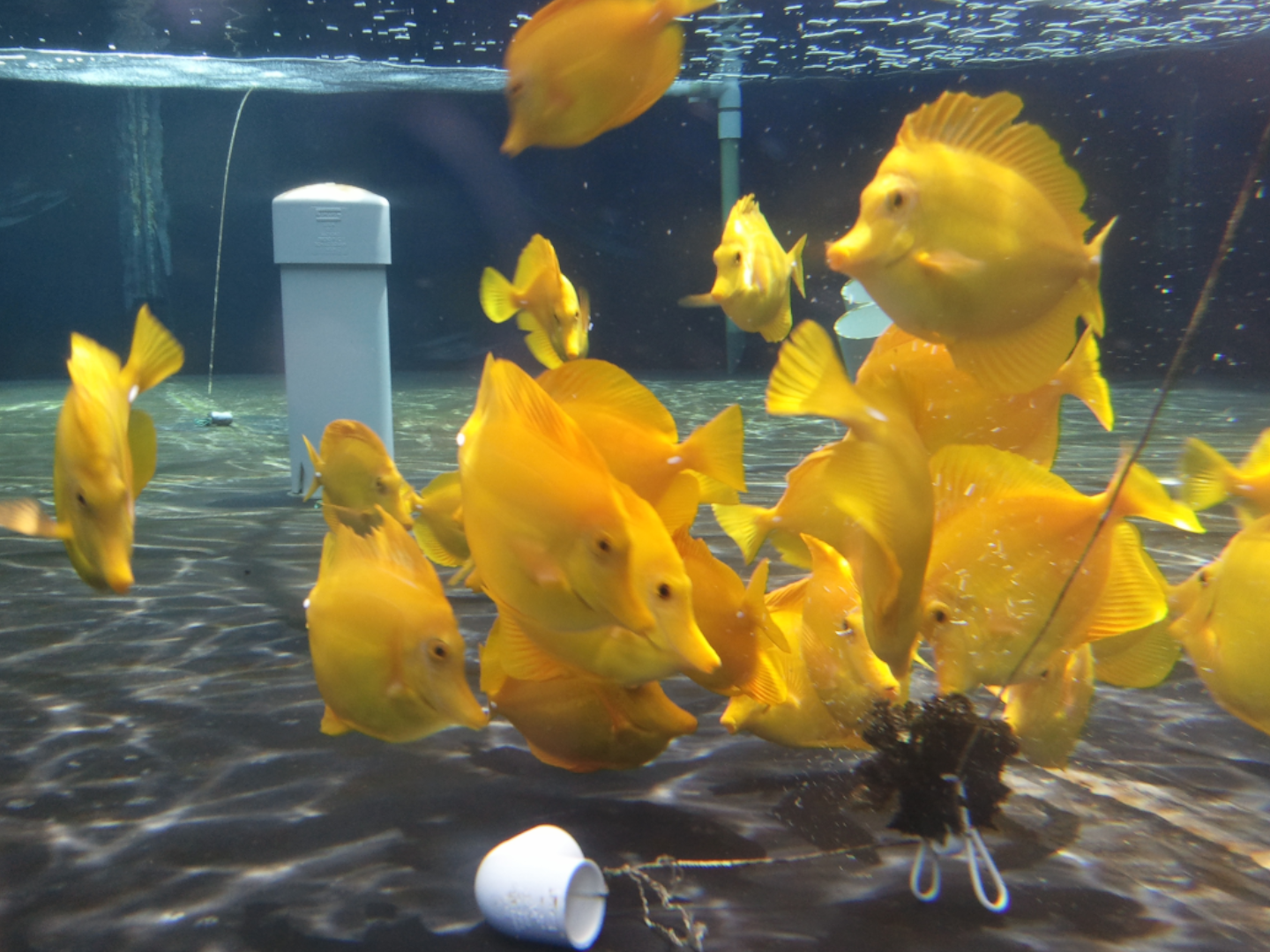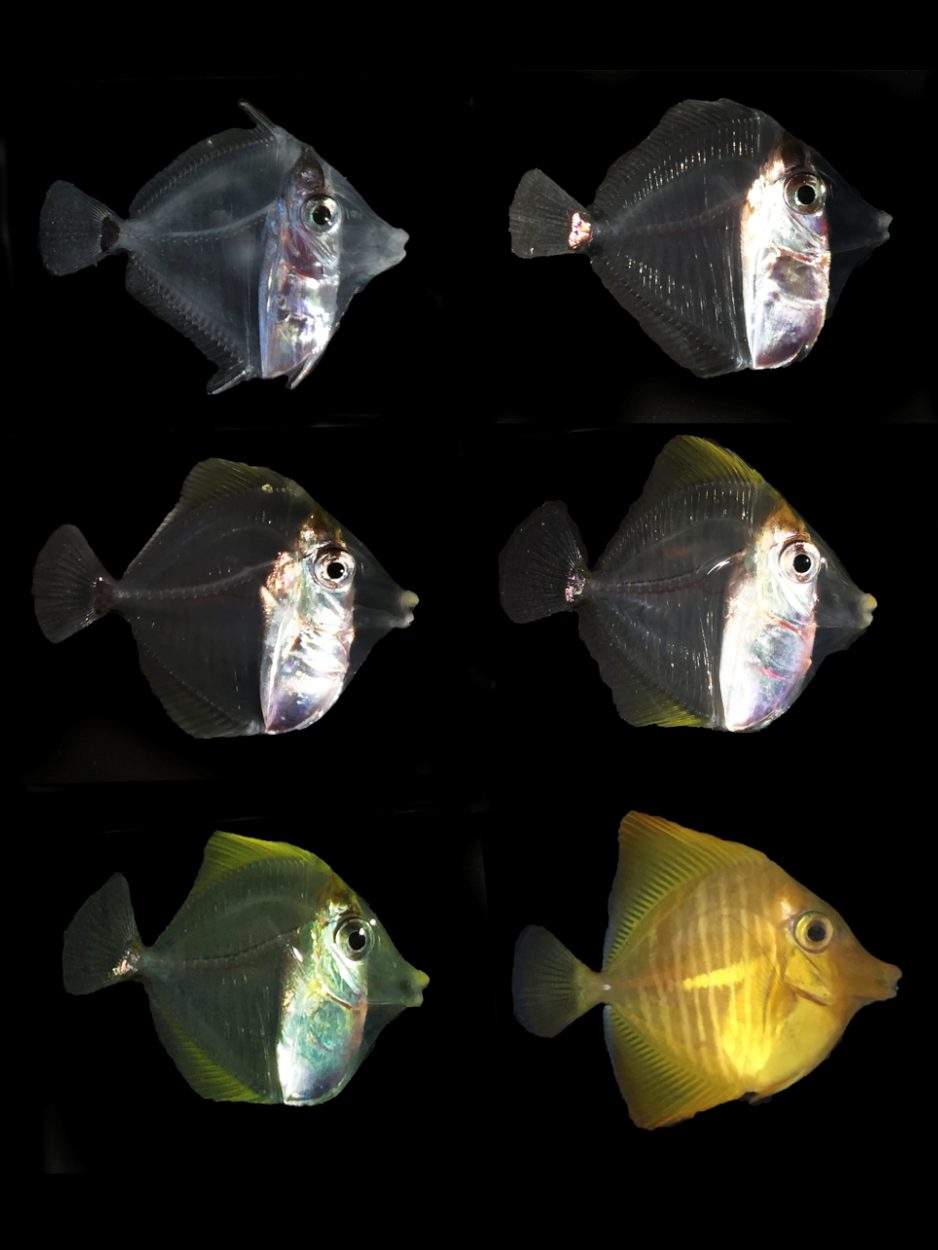

Color change exhibited by Yellow Tang (Zebrasoma flavescens) during metamorphosis from larvae to settled juveniles.
Hawaii is home to 80% of all coral reefs in the United States and they are valued at $33 billion, underscoring the urgency to protect and conserve this valuable resource. In addition to their importance for tourism and recreation, and their value in maintaining global biodiversity, Hawaii’s reefs are a source of livelihood for local fisherman. The aquarium fish industry was one of the most valuable near-shore fisheries in Hawaii, with 280,000 Yellow Tang (Zebrasoma flavescens) collected annually from the reefs off the Kona coast in Hawaii.
Currently, the global marine ornamental trade relies almost exclusively on wild-caught fish. However, collection of reef fish in Hawaii for the aquarium trade recently was banned, pending environmental review. To address this challenge, OI scientists achieved the first-ever successful cultivation of captive-bred Yellow Tang and is working with industry partners to commercialize this technology. OI’s ability to produce captive-reared coral reef fish provides aquarium hobbyists with a sustainable alternative to wild-caught fish and reduces fishing pressure on sensitive coral reefs.

A population of captive Yellow Tang broodstock feeding on seaweed at Oceanic Institute.
Yellow Tang Aquarium

